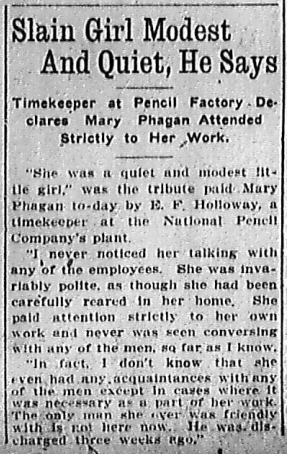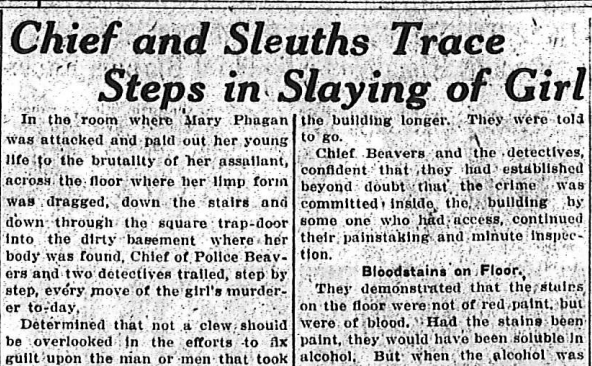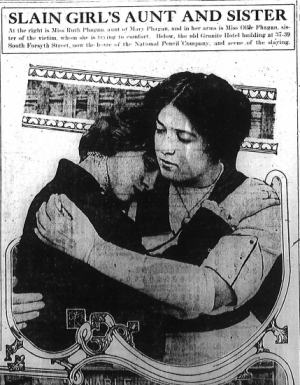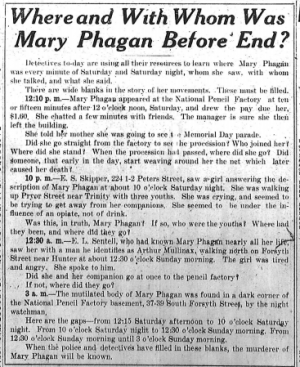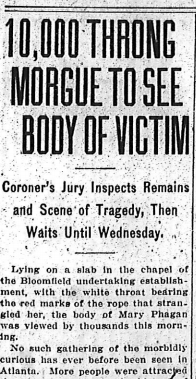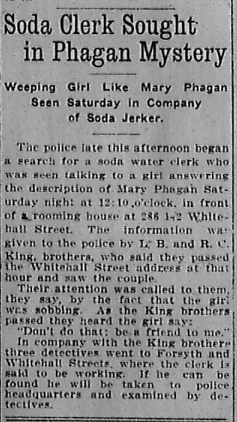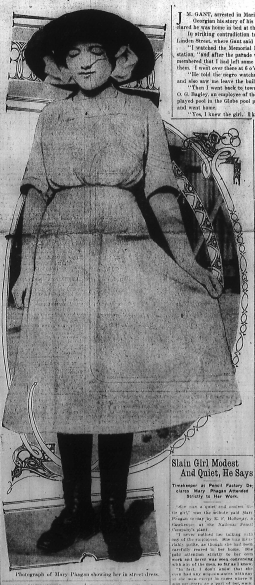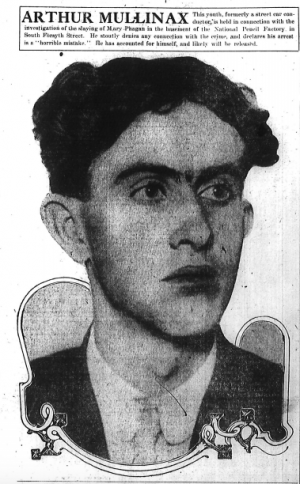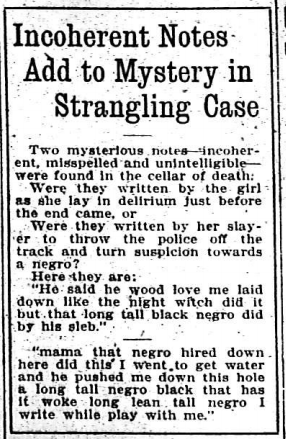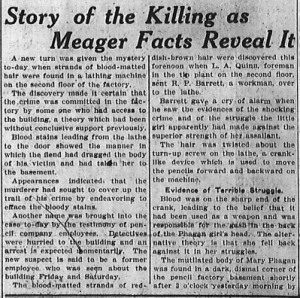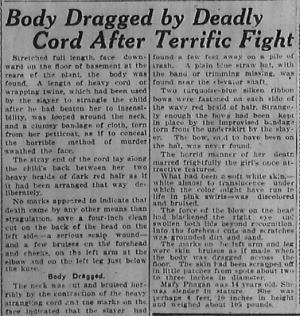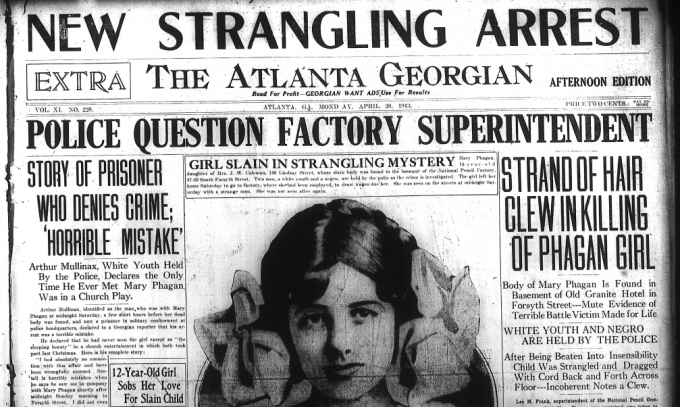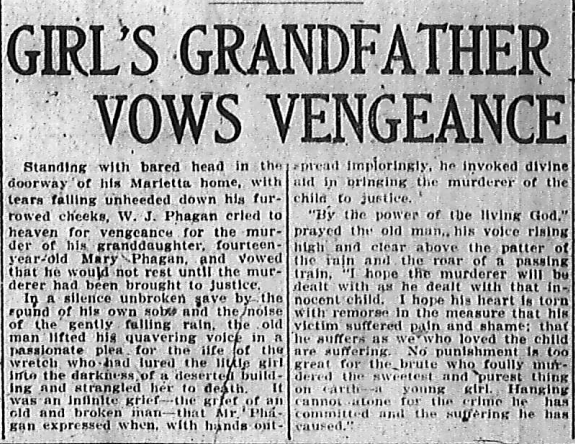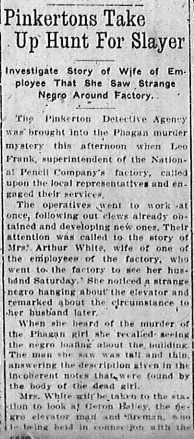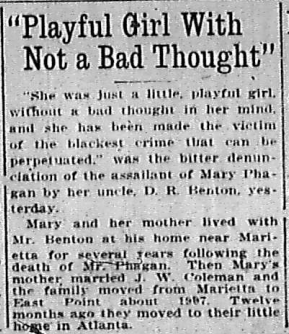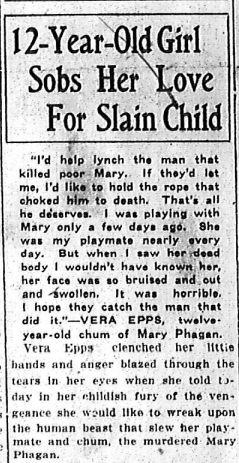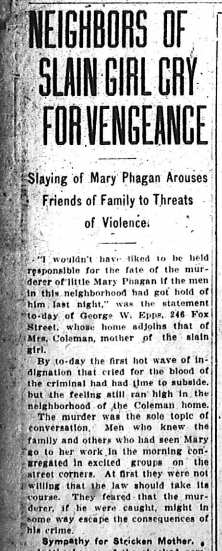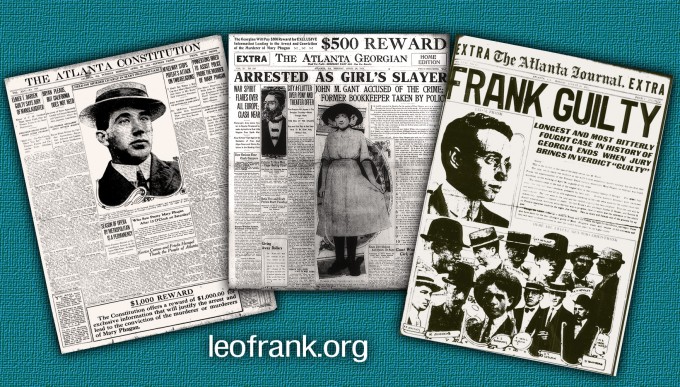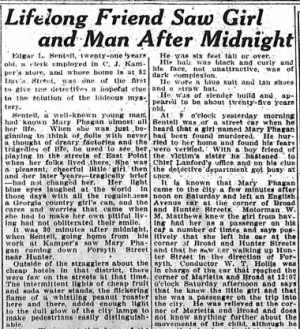 Another in our series of new transcriptions of contemporary articles on the Leo Frank case.
Another in our series of new transcriptions of contemporary articles on the Leo Frank case.
Atlanta Georgian
Monday, April 28th, 1913
Edgar L. Sentell, twenty-one years old, a clerk employed in C. J. Kamper’s store, and whose home is at 82 Davis Street, was one of the first to give the detectives a hopeful clue to the solution of the hideous mystery.
Sentell, a well-known young man, had known Mary Phagan almost all her life. When she was just beginning to think of dolls with never a thought of dreary factories and the tragedies of life, he used to see her playing in the streets of East Point when her folks lived there. She was a pleasant, cheerful little girl then and her later years—tragically brief—had not changed her. Her light blue eyes laughed at the world in those days with all the roguishness a Georgia country girl’s can, and the cares and worries that came when she had to make her own pitiful living had not obliterated their smile. Continue Reading →

